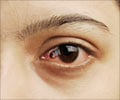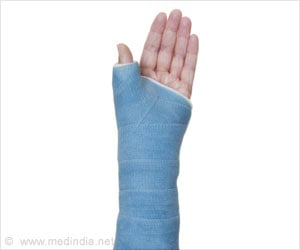
‘Magnetic eyelashes were found to degrade MRI and present patient hazard.’
Tweet it Now
Using two sets of magnetic eyelashes from the same manufacturer that were randomly selected and purchased online, the phantom was created by drilling multiple 2-mm holes in a plastic container and then running monofilament line through these holes to create a grid. The two sets of eyelashes were attached to single nylon strings, placed diagonally within the phantom. The phantom was then submerged in a container filled with distilled water, covered with a layer of plastic film to prevent free movement of the lashes, should they detach. MRI was performed using a 3-T scanner with T2-weighted images, FLAIR images, T1-weighted images, susceptibility-weighted images, DW images, T1-weighted magnetization-prepared rapid-acquisition gradient-echo images, and T2-weighted sampling perfection with application-optimized contrasts using different flip-angle evolutions.
Ultimately, the magnetic eyelashes evidenced an artifact much larger than that created by the aneurysm clips (two made of cobalt alloy, one made of titanium) using the same sequences--measuring 7 × 6 cm maximal on susceptibility-weighted images, obscuring the entire phantom. Although the eyelashes stayed attached to the strings during the scan, upon removal of the phantom from the bore, one set of eyelashes detached from its string. Restrained by the plastic covering, it became attracted to the other eyelashes still attached to the phantom.
"Although friction and adhesion may differ from patient to patient, depending on the width and character of the native eyelashes of an individual," Slonimsky and Mamourian wrote, "we strongly recommend inserting a line about magnetic eyelashes on the MRI safety questionnaire and adding stops in the screening system to prevent the entry of anyone with these lashes, including staff, into the MRI scanner room."
Source-Eurekalert









